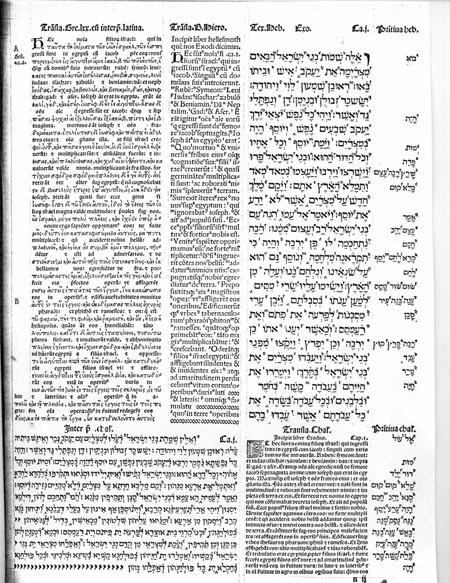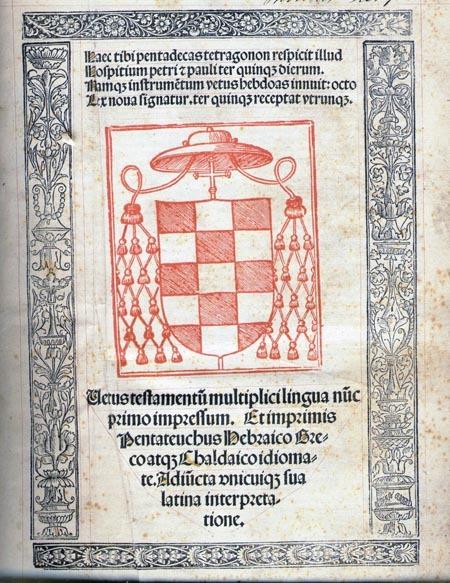
|
|
Beginning of the Book of Exodus
|
Biblia Polyglotta. Academia Complutensi: Arnaldi Guillelmi de Brocario, 1514-1517. 6 v.: ill., front.; 39 cm.
The "Complutensian Polyglot" contains the editio princeps of the Septuagint (the Greek translation of the Hebrew Bible) and the first printed edition of the Greek New Testament (colophon dated 10 January 1514). Cardinal Francisco Ximénez de Cisneros, founder of the trilingual university in Alcalá (Complutum, in Latin), supported the work of Hebrew and Greek scholars under the leadership of Diego López de Zuñiga (d. 1531) by providing manuscripts he had borrowed from Venice and the Vatican or purchased. Ximénez's death and the difficulty in obtaining papal approval delayed official publication of the work until 1521/22, even though all six volumes had been printed by 1517.
In the prefatory letter (composed in 1517), Ximénez diplomatically asserted that the "meaning of heavenly wisdom" can emerge from any language. Nonetheless, after translation, Scripture remains full of meanings, "which are not able to be understood in any way other than from the very fount of the original language."
There are four volumes of the Old Testament, with Jerome's Latin Vulgate translation in the center of the page between the Hebrew text and the Septuagint; Targum Onkelos (an Aramaic translation) is printed for the Pentateuch along with a Latin translation. The fifth volume is the New Testament in Greek, and the sixth includes various indices and study aids.
Additional image:

|
|
Title Page
|
Sources of information:
Pelikan, Jaroslav Jan. The Reformation of the Bible: The Bible of the Reformation. Catalog of the exhibition by Valerie R. Hotchkiss and David Price. New Haven: Yale University Press, c1996.
The Cambridge History of the Bible. Cambridge: University Press, 1963-1970.
